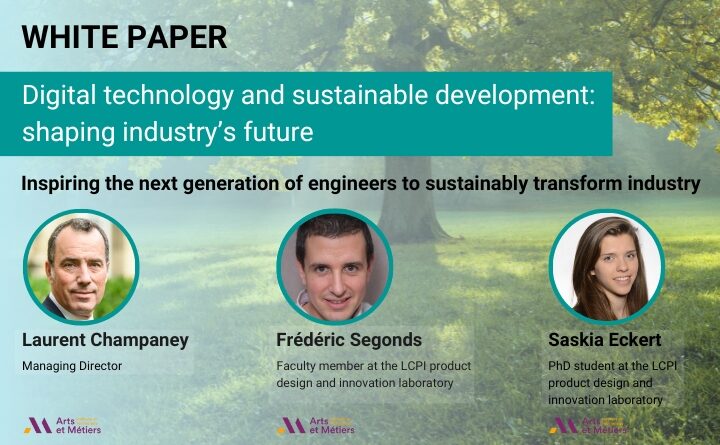The ecological transition is a major challenge for companies and industry is seeking pragmatic solutions to reduce its environmental impact. The jobs and skills required are changing, and training is a key factor in keeping up with this trend. Engineers have a key role to play in this transformation.
Laurent Champaney, President of France’s Arts et Métiers engineering school, explains how. INTERVIEW
“Should engineers be given more power? Jean-Marc Jancovici, founder of the Bilan Carbone assessment tool and member of the French High Council for the Climate, answered this question recently put to him by the magazine “l’Obs“: “The role of the engineer is to help elected representatives implement a project that will enable us to navigate as smoothly as possible in a disrupted and constrained world“.
Engineers have an important role to play in industry to meet environmental and social challenges. They are the link between the ability to control industrial transformation processes and the management of an organization. They are both the guarantors of energy optimization and material savings throughout a product’s life cycle, and leader within a multi-disciplinary team. “Engineers must be capable of understanding and measuring the impact of the products or solutions they develop, during production, when in use, and at end-of-life”, explains Laurent Champaney.
Digital courses to support industry
The IPCC’s goal of achieving carbon neutrality by 2050 is changing the game, and companies are focusing on their engineers to explore new technological opportunities. “We focus on the challenge of decarbonizing industry and the transport sector. We work closely with our industrial partners and with those who drive research activities (public sector, Europe…). Mastery of digital tools in our courses is key to the success of our projects.”
Many of the students’ research topics focus on environmental issues, a theme increasingly adopted by this young generation in search of meaning and commitment. Frédéric Segonds, faculty member at the LCPI product design and innovation laboratory, Arts et Métiers, makes this observation: “With a CAD solution, we have a precise idea of the size of a part, its volume and what materials we need to make it — even when it’s still in the early stages of ideation. This means we can include its environmental impact in the list of key variables we track throughout the product design process.”
Read the full article with the testimonials of Frédéric Segonds, faculty member at the LCPI product design and innovation laboratory, Arts et Métiers and Saskia Eckert, PhD student at the LCPI product design and innovation laboratory, Arts et Métiers





